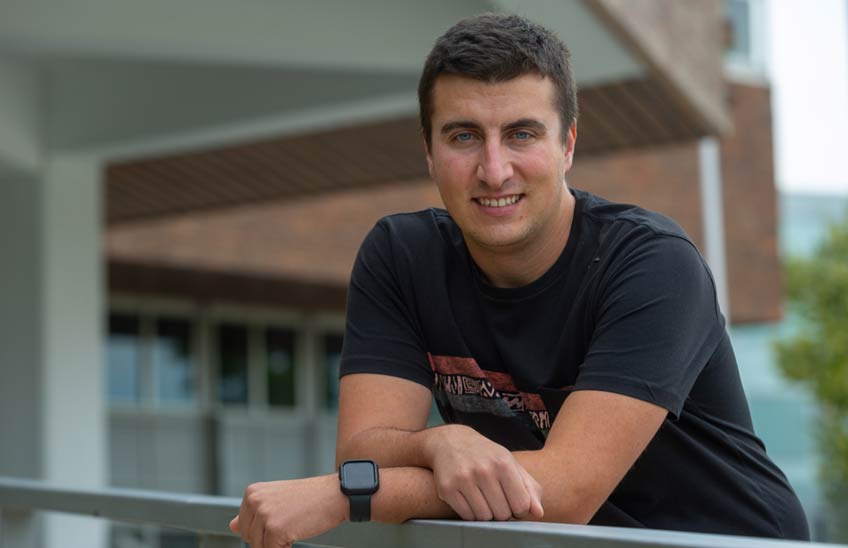New avenue opens up in the fight against glioblastoma research
Alejandro Urdiciain, PhD from the University, has focused his research on the search for an alternative therapy for this subject brain tumour.

PhotoManuelCastells/Alejandro Urdiciain
05 | 10 | 2021
Alejandro Urdiciain (Figarol, 28 years old) has developed his doctoral dissertation in the search for an alternative therapy for glioblastoma, one of the most aggressive brain tumours.
This young researcher from Navarre focused his study on the role played by histone deacetylase 6 (HDAC6), which appeared in very high levels in tumour cells compared to healthy ones. "In order to prove that this histone deacetylase was one of the causes of development in this cancer subject , we carried out different treatments to reduce its expression and activity, such as silencing the gene using RNA interference or blocking the action of HDAC6 with a drug".
Although the results of this research are preliminary and have been carried out on cell lines - more experiments are needed to find out whether it is possible to transfer the treatment to patients - Dr Urdiciain indicates that the proposed treatments have succeeded in slowing tumour growth. "We have found that by combining a drug against HDAC6 with temozolamide, which is the chemotherapeutic agent, we enhance the effect of the chemotherapy on the tumour," he adds.
One of the objectives achieved in this research has been the "reversion of the mesenchymal state of cell lines that come from the tumour", which contributes to reducing their aggressiveness and "migratory and clonogenic capacity". In addition, it has been possible to block both "the Sonic Hedgehog pathway" - a cell signalling pathway that allows the cells to grow - and "the autophagy process", preventing the tumour from increasing in size.
For this scientist, it is necessary to continue research by testing the efficacy of different drugs on the tumour in animal models, in order to better understand the behaviour of glioblastoma. "If our drug worked in vivo at model , in combination with chemotherapy, we could improve the therapy against glioblastoma, which has not progressed since 2005.
According to the Brain Tumour Registry of the United States (CBTRUS), glioblastoma is the most common and most malignant brain tumour. Current therapy consists of surgical resection combined with chemotherapy and radiotherapy, as long as it improves the patient's quality of life. Survival of glioblastoma patients, five years after diagnosis, is less than 7%, highlighting the need to find a new alternative therapy for this tumour.
Alejandro Urdiciain is graduate in Biochemistry (biomedical), Master in Biomedical Research, and PhD by the School of Sciences of the University of Navarra.
Bibliographical references
- A. Urdiciain, E. Erausquin, MV. Zelaya, I. Zazpe, JL. Lanciego, B. Meléndez, JA. Rey, MA. Idoate, N. Riobo-Del Galdo, JS. Castresana. Silencing of Histone Deacetylase 6 Decreases Cellular Malignancy and Contributes to Primary Cilium Restoration, Epithelial-to-Mesenchymal Transition Reversion, and Autophagy Inhibition in Glioblastoma Cell Lines. Biology (Basel). 2021 May 26;10(6):467. doi: 10.3390/biology10060467
- A. Urdiciain, E. Erausquin, B. Meléndez, JA. Rey, MA. Idoate, JS. Castresana. Tubastatin A, an inhibitor of HDAC6, enhances temozolomide-induced apoptosis, and reverses the malignant phenotype of glioblastoma cells. Int J Oncol 2019 May;54(5):1797-1808. doi: 10.3892/ijo.2019.4739




